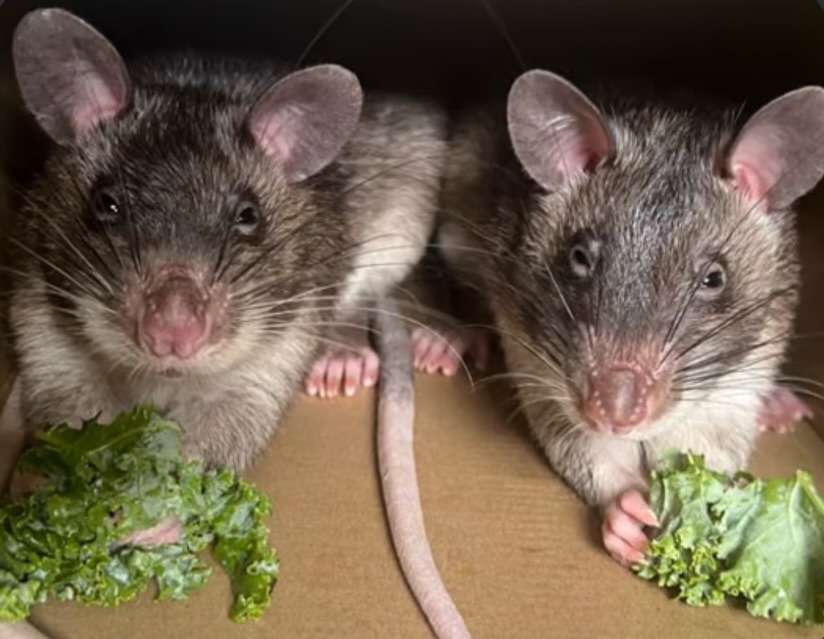- The significance of Happy World Rat Day and its origins.
- The fascinating characteristics and behaviors of rats, emphasizing their intelligence and social nature.
- The role of rats in conservation and detection tasks, including landmine detection and medical applications.
- The importance of rats in wildlife education and their presence in zoos like the Staten Island Zoo.
- A focus on specific rat species, such as the Norway rat and African pouched rats, highlighting their unique traits and contributions to conservation efforts.
Marking Happy World Rat Day is more than a delightful celebration—it’s a call to recognize the incredible traits and innovative uses of these misunderstood creatures. Established to raise awareness and shift perceptions about rats, this day encourages appreciation of their contributions to science, ecology, and education.
Rats are often undermined by negative stereotypes, yet they embody remarkable cognitive abilities and complex social structures. Within research, their problem-solving skills are legendary, and they’re often the star subjects in behavioral studies. Rats live in colonies where they exhibit a range of social behaviors. They care for one another, communicate through high-frequency signals, and display empathy. Such insights into rat social structures have profound implications, revealing the intricacies of animal societies.
Their adaptability isn’t just physical but mental as well. Rats have colonized nearly every environment on the planet, from bustling urban landscapes to remote rural corners. This adaptability is testament to their intelligence and survival skills. Among domesticated rats, the Norway rat is a popular companion animal. At the Staten Island Zoo, Oreo the Norway rat stands out for his friendly and curious disposition, showcasing the capacity of rats to be sociable and interactive.
Rats, particularly the African pouched rat, have made headlines for their unparalleled contributions to humanity, especially in conservation and public health. These animals are trained to detect landmines, a critical task given the prevalence of mines in post-conflict regions posing dangers to civilians. With their acute sense of smell and lightweight bodies, they perform sweeps that are both safer and more cost-effective than traditional demining techniques. Equally impressive is their impact on public health; they’re trained to sniff out tuberculosis in laboratory samples, offering a quicker and less expensive diagnostic method.
Also known as HeroRATS, these animals are at the forefront of environmental and humanitarian efforts. Their involvement doesn’t stop there. African pouched rats like Remy and Emilie at the Staten Island Zoo are renowned for their large cheek pouches used to hoard food. These rats have sophisticated capabilities, not limited to one talent. Their extensive training makes them exemplary in search and rescue operations following natural catastrophes. They have the potential to identify illegal wildlife goods, playing a small but vital part in combating wildlife trafficking.
Education about rodents is essential. At zoos, rats play an important educational role, demonstrating animal behavior and conservation relevance to the public. By integrating rats into educational programs, zookeepers can challenge myths, sharing scientific insights that inspire a shift in perception. For example, encounters with rats like Oreo, Remy, and Emilie can spark curiosity and empathy in visitors of all ages, turning fear into fascination.
Specific species, such as the African pouched rats, are especially compelling. Their natural habit of filling their cheek pouches to carry food items mirrors a unique adaptation strategy. Apart from their utility in conservation, they form an intriguing subject for scientific study.
Thus, Happy World Rat Day becomes a celebration not just of rats but of the ingenuity and dedication in harnessing their talents for the greater good. It shines a light on the creative intersections between wildlife and human welfare and invites us all to reconsider what we know about rats. The positive interactions and advancements made by rats in multiple domains make them an invaluable asset to both nature and human societies. By properly acknowledging the contributions and capabilities of rats, we open up new possibilities in how we understand and interact with the animal kingdom.
*****
Source Description
Happy World Rat Day! Here at the Zoo, we love our rodents. And who wouldn’t? Rats are amazing creatures—smart, social, and athletic! In addition to our Norway rat, Oreo, the Staten Island Zoo is home to two African pouched rats, Remy & Emilie. They get their name from their cheek pouches, which allows them to store all the fruits, vegetables, nuts, and insects they can. (Can you say FULL CHEEK FRIDAY??) Due to their excellent sense of smell and quick trainability, this species is also being used to detect active landmines, help diagnosis tuberculosis, identify illegally trafficked wildlife products, AND perform search and rescues after natural disasters! WHEW! No wonder these guys are known as @herorats


